After using Environmental Adaptations as the foundation for an individualized FAB (Functionally Alert Behavior) Strategies® program to help youth with complex behavioral challenges See Picture Environmental Adaptations the FAB Strategies® curriculum proceeds to describe the Sensory Modulation strategies. The Sensory Modulation strategies build on the environmental adaptation strategies of the photo gallery .
The Sensory Modulation strategy portion of the photo gallery begins with a picture of the Arousal Level strategy.
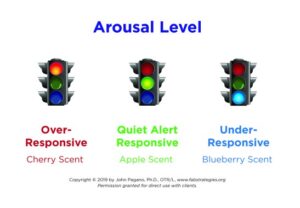
The Arousal level strategy uses colored traffic lights and scents to assist youth in gaining awareness of their current arousal level, particularly related to inappropriate behavior. Through the arousal level strategy youth can monitor their level of alertness as a foundation for learning to up-regulate or down-regulate their arousal to maintain a quiet alert state. The red light is paired with a cherry scent to depict over-responsivity, which is often related to aggression. The green light uses an apple scent depicting an optimal quiet-alert state for appropriate behavior. The blue light special is accompanied by a blueberry scent and relates to an under-responsive state often associated with self-injurious and self-isolating behaviors.
Once they can assess their current arousal level students are taught to use the Arousal level modulate strategy early use of individualized sensory coping strategies. Students are gradually taught to use individualized sensory coping to transition towards a quiet alert responsive state that facilitates appropriate expression their “big feelings” non-aggressively. Research suggests that youth can significantly improve their behavior by using sensory coping strategies (e.g., such as using fidgets) to improve their behavior (Chin et al., 2011; Wells et al., 2012; Kovacs & Lopez-Duran, 2012; Lohrasbe & Ogden, 2017; Soh et al., 2015).
The Arousal level and Arousal level modulate strategies are simpler, distinct, yet consistent with the Alert® (Wells et al., 2012) and Zones of Regulation® (Kuypers, 2014) program. For these reasons the Arousal level and Arousal level modulate strategies can be selectively used in conjunction with both the Alert® and Zones of Regulation® program materials while avoiding clients getting confused with the differences between these curriculums.
The next photo gallery picture shows a child receiving back vibration.

This photo also represents the use of self-touch and specific massage strategies that research suggests significantly improves interoceptive awareness of internal body states and reduces relapse in adults with a history of Post-Traumatic Stress Disorder and substance abuse (Price & Hooven, 2018). Activities that promote interoceptive awareness of internal state can also enhance body awareness and social skills in youth with Autism Spectrum Disorder (Mahler, 2017). Research also indicates that sensory processing, behavior and communication skills can be significantly improved in preschoolers with Autism Spectrum Disorder through specific QST massage (Silva & Schalock, 2013).
The next photo represents the use of mindfulness body based strategies for attention as well as a foundation for appropriate behavior and learning.

FAB Strategies emphasizes activities that increase body awareness to improve behavior (Singh et al., 2011; Brown & Gerbarg, 2013).
The next four pictures depict FAB Strategies® Sensory Modulation strategies application of the traditional and rare use of occupations that promote sensory integration. The sensory integration frame of reference is important to occupational therapy because sensory development and treatment take place most effectively in a natural context applying meaningful occupations to improve behavior in youth with Autism Spectrum, Sensory (Dunn et al., 2016), and Post-Traumatic Stress Disorder (Warner et al., 2014). The first two photos show typical occupations involving beach and classroom pet play providing primarily tactile input.
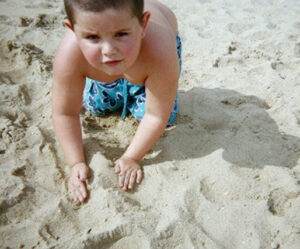
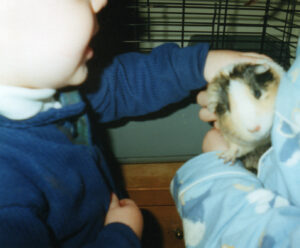
The next two photo gallery pictures show how the occupation of horse grooming functions as more than the sum of its parts for children with Autism Spectrum, Mental Illness, and Sensory Processing disorders. A child complaining of hearing voices chose to resume horse grooming when reminded the horse would be uncomfortable if he did not get brushed. The praxis task of horse grooming was developmentally graded to improve tactile, deep pressure, and smell integration.
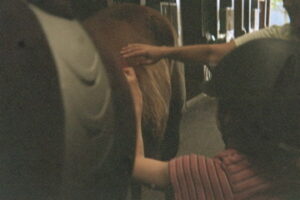
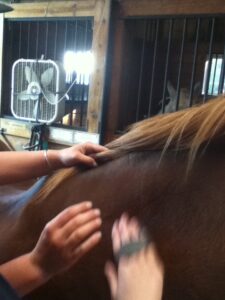
Finally, thanks to the tireless efforts of many scientists and occupational therapists working collectively and building on each others efforts (Miller & Collins, 2012; Schoen et al., 2019; Steinbrenner et al., 2020) sensory integration is finally beginning to be categorized as an evidence-based treatment for Autism Spectrum Disorders in youth SIasEvidence-based
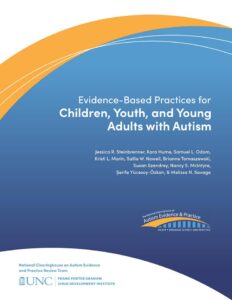
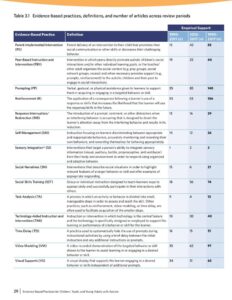
The Sensory Modulation strategies in the photo gallery show how the activities in this section build on environmental adaptations in developing an individualized curriculum for youth with complex behavior challenges. This post presents several photos and research articles supporting the sensory modulation approach for helping youth with complex behavioral challenges including sensory, Autism Spectrum, and mental health disorders. I hope that therapists will find these strategies, photos and research references helpful.
References
Brown, R. P., Gerbarg, P. L., & Muench, F. (2013). Breathing practices for treatment of psychiatric and stress-related medical conditions. Psychiatric Clinics, 36(1), 121-140. www.breath-body-mind.com
Chin, W. C., Chao, K. Y., Chang, H. L., Li, H. M., & Chen, S. H. (2017). Coping strategies of Taiwanese children with autism spectrum disorders. Journal of clinical nursing, 26(21-22), 3408-3421.
Dunn, W., Little, L., Dean, E., Robertson, S., & Evans, B. (2016). The state of the science on sensory factors and their impact on daily life for children: A scoping review. OTJR: occupation, participation and health, 36(2_suppl), 3S-26S.
Kovacs, M. & Lopez-Duran, N. L. (2012). Contextual emotion regulation therapy: A developmentally-based intervention for pediatric intervention. Child and adolescent psychiatric clinics of North America, 21(2), 327.
Kuypers, L. (2014). The Zones of Regulation Outline. www.zonesofregulation.com
Lohrasbe R.S., Ogden P. Somatic resources: Sensorimotor psychotherapy approach to stabilizing arousal in child and family treatment. Australian and New Zealand Journal of Family Therapy. 2017 Dec;38(4):573-81.M.,
Mahler, K. Interoception: The eighth sensory system. 2017.
Miller LJ, Collins, B. Sensory discrimination disorder. Autism Digest. 2012 Nov.-Dec;32-33.
Price CJ, Hooven C. Interoceptive awareness skills for emotion regulation: Theory and approach of mindful awareness in body-oriented therapy (MABT). Frontiers in psychology. 2018;9.
Schoen SA, Lane SJ, Mailloux Z, May‐Benson T, Parham LD, Smith Roley S, Schaaf RC. A systematic review of Ayres sensory integration intervention for children with autism. Autism Research. 2019 Jan;12(1):6-19.
Silva L, Schalock M. Treatment of tactile impairment in young children with autism: results with qigong massage. International Journal of Therapeutic Massage & Bodywork. 2013 Dec;6(4):12. www.qsti.org
Singh, NN, Lancioni GE, Manikam R, Winton AS, Singh AN, Singh J, Singh AD. A mindfulness-based strategy for self-management of aggressive behavior in adolescents with autism. Research in Autism Spectrum Disorders. 2011 Jul 1;5(3):1153-8.
Soh, D. W., Skocic, J., Nash, K., Stevens, S., Turner, G. R., & Rovet, J. (2015). Self-regulation therapy increases frontal gray matter in children with fetal alcohol spectrum disorder: evaluation by voxel-based morphometry. Frontiers in Human Neuroscience, 9.
Steinbrenner, J.R., Hume, K., Odom, S. L., Morin, K. L., Nowell, S. W., Yucesoy-Ozcon, S., & Savage, S. (2020).Tomaszewski, B., Szendrey, S. Evidence-based practices for children, youth, and young adults with Autism. The University of North Carolina at Chapel Hill, Frank Porter Graham Child Development Institute, National Clearinghouse on Autism Evidence and Practice Review Team.
Warner E, Spinazzola J, Westcott A, Gunn C, Hodgdon H. The body can change the score: Empirical support for somatic regulation in the treatment of traumatized adolescents. Journal of Child & Adolescent Trauma. 2014 Dec 1;7(4):237-46.
Wells AM, Chasnoff IJ, Schmidt CA, Telford E, Schwartz LD. Neurocognitive habilitation therapy for children with fetal alcohol spectrum disorders: an adaptation of the Alert Program®. American Journal of Occupational Therapy. 2012 Jan 1;66(1):24-34.
